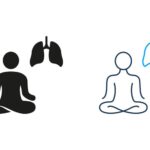Geriatric, aging or getting old makes our body go through many physical changes. These changes usually cause a decrease in muscle strength, bone density, body coordination, and even make the joints stiffer, which sometimes can lead to falls and fractures. For elderly citizens, exercising may be the key for bringing back and sustaining the physical function required in daily living. Geriatric physiotherapy is a physical therapy that deals with the issues concerning elderly people. It is used in various Geriatric conditions like low body mass, dizziness, hearing or vision impairment.
It is a specialized branch of physiotherapy that focuses on the unique movement needs and health conditions of older adults, typically aged 60 and above. It aims to improve their mobility, strength, balance, coordination, and overall quality of life, while also managing age-related health conditions.
Objectives of Geriatric Physiotherapy

- Prevent falls and injuries
- Maintain or regain independence
- Improve joint mobility and muscle strength
- Reduce pain and inflammation
- Enhance cardiovascular endurance
- Prevent or slow down age-related degeneration
Age-related Physiological Changes
| System | Common Changes in Older Adults |
|---|---|
| Musculoskeletal | Sarcopenia (loss of muscle mass), joint stiffness, osteoporosis |
| Neurological | Slowed reflexes, reduced coordination, neurodegenerative diseases |
| Cardiovascular | Decreased cardiac output, hypertension |
| Respiratory | Decreased lung capacity, reduced oxygen exchange |
| Sensory | Decline in vision, hearing, and proprioception |
| Cognitive | Memory decline, dementia, slower processing |
Common Conditions Treated
- Osteoarthritis & Rheumatoid Arthritis – Joint pain, stiffness, reduced range of motion
- Osteoporosis – Fragile bones, fracture prevention
- Parkinson’s Disease – Gait training, tremor control, posture improvement
- Stroke Rehabilitation – Regaining movement and coordination
- Alzheimer’s/Dementia – Motor learning, cognitive-motor integration
- Post-surgical Rehab – Recovery after hip/knee replacements, spinal surgery
- Balance Disorders – Vestibular issues, fall prevention
- Incontinence – Pelvic floor strengthening
- General deconditioning – After prolonged bed rest or hospitalization
Assessment includes:
Initial Evaluation Includes:
- Medical history and medication review
- Functional mobility testing (e.g., TUG test, gait analysis)
- Muscle strength and joint range of motion testing
- Balance and coordination assessments
- Cardiopulmonary endurance (e.g., 6-minute walk test)
- Cognitive screening (e.g., MMSE)

Role of a Geriatric Physiotherapist
- Customized care plans based on comorbidities
- Education on posture, ergonomics, and self-care
- Caregiver education and support
- Home safety advice (fall-proofing)
- Multidisciplinary coordination (doctors, nurses, occupational therapists)
Intervention Techniques
| Intervention | Description |
|---|---|
| Strength Training | Use of resistance bands, weights to maintain muscle mass |
| Balance Training | Static and dynamic activities to prevent falls |
| Gait Training | Walking aids, posture correction, step training |
| Flexibility Exercises | Gentle stretching for joints and soft tissues |
| Functional Task Training | Practicing daily activities like transfers, stair climbing |
| Manual Therapy | Joint mobilization, soft tissue massage |
| Electrotherapy | Pain relief (TENS), muscle stimulation |
| Respiratory Therapy | Breathing exercises, postural drainage |
| Aerobic Conditioning | Low-impact cardio (walking, cycling, swimming) |
Assistive devices used -Canes and walkers, Orthotics and braces, Wheelchairs, Grab bars, raised toilet seats (home modifications)
Multidisciplinary Collaboration / Team approach
- Doctors/Geriatricians: Diagnosis, medical management
- Occupational Therapists: ADL (Activities of Daily Living) training
- Speech Therapists: In cases of stroke or Parkinson’s
- Nutritionists: Support muscle preservation and bone health
- Social Workers: Community support and mental health
Education and Counseling
- Educating patients and caregivers about exercises, safety, and lifestyle
- Training in the correct use of assistive devices
- Encouraging active aging and community participation

